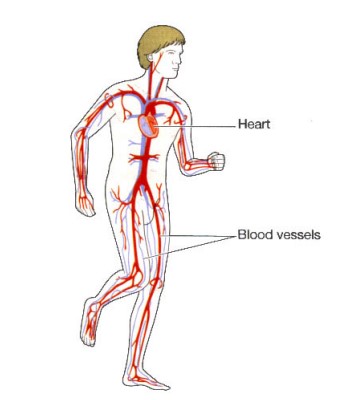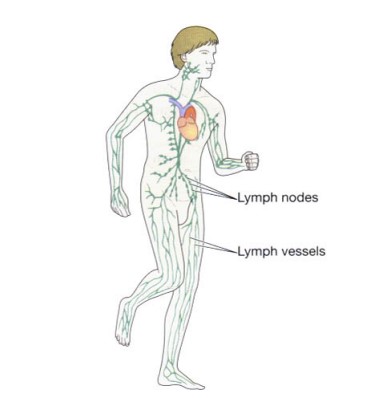Table of Contents
Transport systems
Blood-Transport systems
Through a vast network of blood vessels, the blood distributes substances throughout the body. Adults have 5 to 6 liters of blood in their bodies. It is made up of two components: cells suspended in a viscous fluid called plasma.
Plasma
This is mainly water with a wide range of substances dissolved or suspended in it. These include:
- nutrients absorbed from the alimentary canal
- The oxygen absorbed from the lungs
- Chemical substances synthesized by body cells, e.g. hormones
- Waste materials produced by body cells are eliminated from the body by excretion.
Blood cells
There are three unique groups that are divided into categories based on their functions.
Red blood cells called erythrocytes are responsible for carrying oxygen and, to a lesser extent, carbon dioxide, between the lungs and every cell in the body.
White blood cells called leukocytes are primarily concerned with the body’s defense against germs and other potentially harmful substances that enter the body. Leukocytes come in a variety of varieties and perform their protective duties in various ways. These cells are less common and bigger than erythrocytes.
Small cell fragments called thrombocytes (platelets) are crucial to the intricate process of blood clotting.

through a microscope.
Circulatory system-Transport systems
This consists of a network of blood vessels and the heart.

Blood vessels
There are three types:
- Arteries, which carry blood away from the heart
- Veins, which return blood to the heart
- Capillaries link the arteries and veins.
Small blood vessels known as capillaries have extremely thin cell-only walls. They serve as the point of exchange for materials including nutrition, oxygen, and cell waste between the blood and bodily tissues. Blood travels through a network of blood vessels to:
- The lungs (pulmonary circulation), where carbon dioxide is released from the blood into the air and oxygen is taken in from the air in the lungs
- Cells in all parts of the body (general or systemic circulation).
Heart
A muscular sac makes up the heart. It circulates blood throughout the body, regulates blood pressure in the lungs, and pumps blood around the body. Life is dependent on this.
There is no cognitive (voluntary) control over the cardiac muscle. The heart beats 65 to 75 times per minute while at rest. The rate may significantly rise during physical activity when the muscles moving the limbs have greater nutritional and oxygen demands and are in various emotional states.
Counting the heart’s beats allows you to determine how fast it is beating. Where an artery is near the skin’s surface and may be softly rubbed against a bone, the pulse can be felt the most readily. The area that is most frequently utilized for this purpose is the wrist.
Lymphatic system
The lymphatic system is made up of a network of lymph vessels, which emerge as blind-ended tubes between tissue cells and blood capillaries. They resemble veins and blood capillaries structurally, but lymph capillaries have holes in their walls that are bigger than those of blood capillaries. Large substances including proteins, pieces of broken tissue cells, and microorganisms can all be found in the tissue fluid known as lymph. It travels via lymphatic channels before being reintroduced into circulation.

At various locations throughout the length of the lymph veins, there are clusters of lymph nodes. The lymph nodes filter the lymph as it flows through, removing bacteria, toxic compounds, and some debris.
The lymphatic system provides the sites for the formation and maturation of lymphocytes, the white blood cells involved in immunity.
Also read: Definition of homeostasis